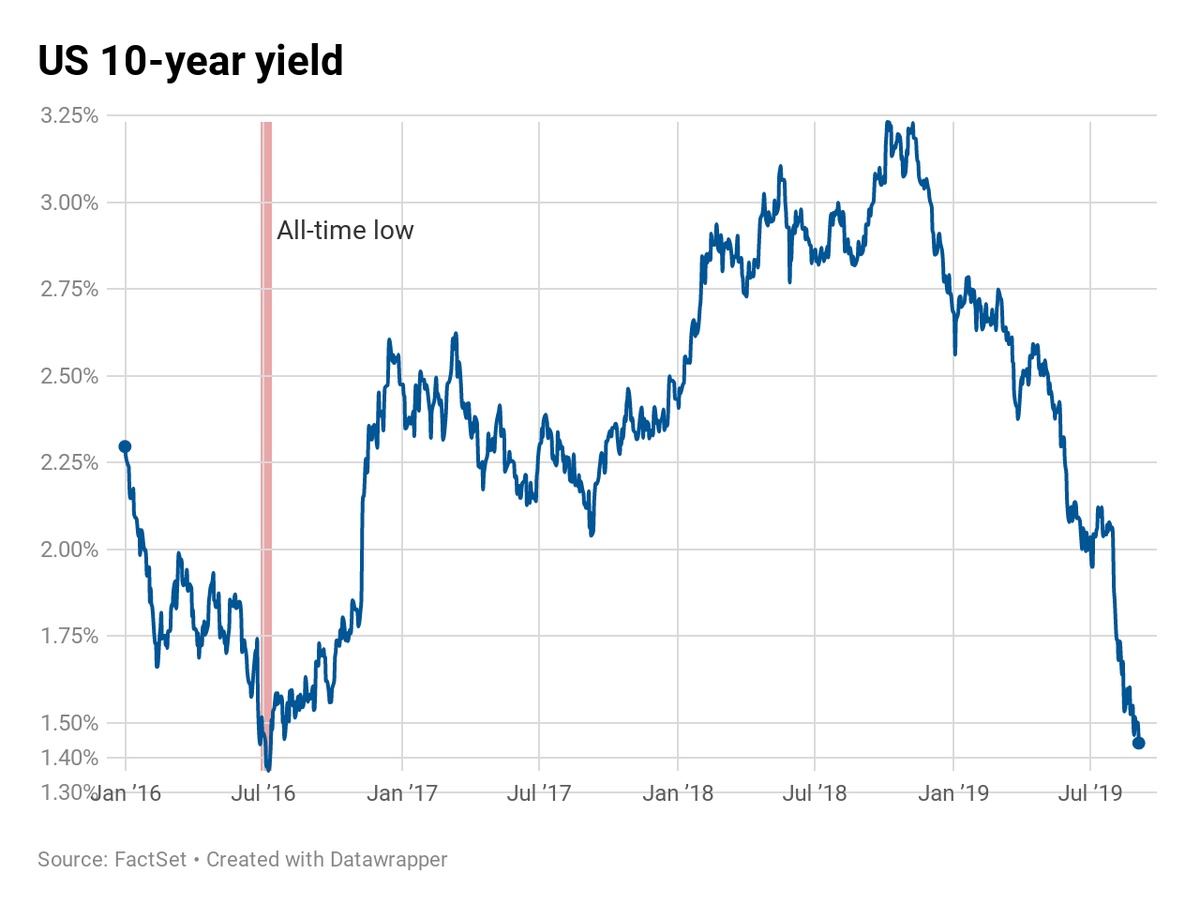Interest rates reflect the price of money and expectations about the economy. The fact that money has a price may sound abstract, however, it is a crucial factor when evaluating the decisions of economic agents and their impact on a country's investment and consumption provisions. A recession in the United States can have serious consequences for the rest of the world due to the interconnectedness of financial systems and the dependence on international trade, among other factors. The behavior of the interest rate in the yield curve of US Treasury Bonds is an important indicator to adjust macroeconomic policy.
For how the yield curve can predict a recession, it is necessary to understand why its variables behave in a way that alerts the authorities. The curve graphically explains investor expectations about the US economy. The first component is the Treasury Bonds put into circulation by the United States government and are debt issued by a country that can be compared by an investor (Barria, 2018). These types of financial market instruments are divided into Treasury Certificates, which have short-term maturities, and US Government Securities, which are long-term debt instruments used to finance the central government deficit (Mishkin, 2014, p. . .3. 4). The second component is interest rates, the price of money. According to economic theory, economic agents demand a higher return for long-term bonds for different reasons: preference for the liquidity of short-term instruments, risk aversion, uncertain expectations about the future, among others (Bondarenko, 2015). .
So what has changed in the yield curve to have economists and financial analysts concerned? On Wednesday, August 14, 2019, the curve inverted, which caused an alarm signal in the face of a possible recession due to a lack of confidence in the economy. Investors begin to demand more long-term products for fear of a possible economic slowdown and generate an increase in the price of long-term bonds due to the increase in demand. This, in turn, pushes interest rates down (bond prices and interest rates are inversely related). The reverse occurs in the short-term bond market: low demand for these pushes interest rates to ever-higher values until the curve slopes downward. According to the economist Campbell Harvey, this reverse behavior among bond yields has occurred before the last recessions (see Figure 1) in the United States (Cox, 2019).
Recessions are a reality of the economic cycle: just because an economy is growing does not mean that a slowdown in production and eventual recession cannot occur. Decisions are made by individuals who do not always act rationally, and speculation plays a crucial role in financial markets. Situations such as the trade war with China, Brexit, concerns about a global economic slowdown, among others, generate uncertainty, which is why investors have begun to demand higher long-term Treasury Bonds in the face of an imminent impact on the US economy. The fact that the US Treasury yield curve has taken a negative slope does not mean that a recession will occur tomorrow; however, it is an indicator of a possible negative scenario in one of the main economies in the world.


No comments yet